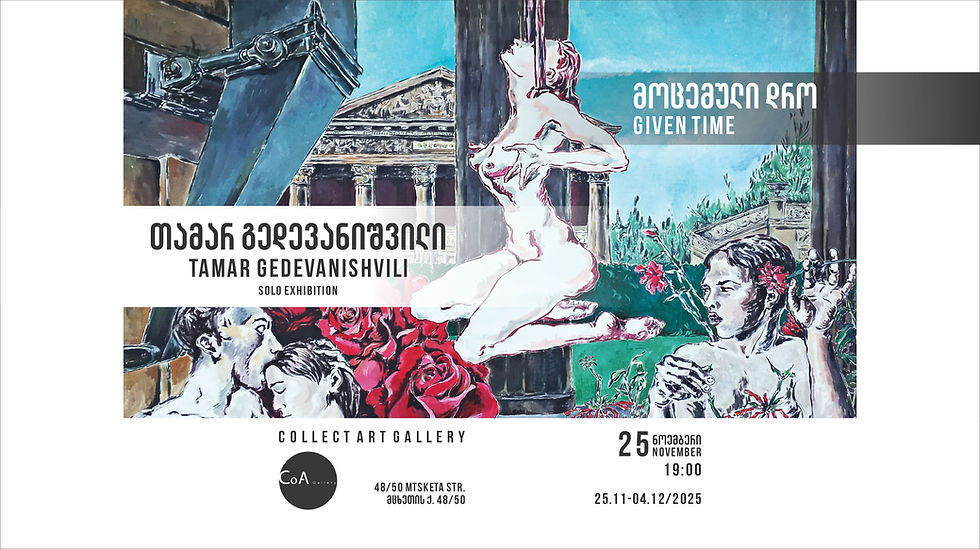Digital Art/ Special Edition
- Tamar Khelashvili
- Aug 8
- 3 min read
Updated: Aug 8
Digital art has long since outgrown its origins in speculative design and technological novelty. Today, it stands as a fully formed language—fluid, boundaryless, and deeply human. In this 74th edition of Art Magazine, we step into the richly layered world of digital creativity, showcasing a vibrant international spectrum of artists who use the digital not simply as a tool, but as a mode of thinking, seeing, and feeling.
Our featured artists traverse a wide range of media: from 3D modeling and generative art to digital collage, animation, AI-based image synthesis, virtual installations, and interactive code environments. Their work is not unified by software or screen, but by a critical engagement with the questions digital art raises: What is real? What is embodied? What can be archived, looped, erased?
Some artists in this issue use digital technologies to explore identity and memory, creating self-portraits from data trails, or reshaping family archives through glitch and repetition. Others channel mythology, climate anxiety, or architectural displacement through richly built virtual landscapes—spaces that hold affect and narrative as much as pixels.
One of the recurring threads throughout this edition is translation—not from language to language, but between physical and digital, seen and simulated, human and machine. In many cases, what begins as a hand-drawn sketch, a photograph, or a movement becomes something new in the digital realm, gaining complexity and fluidity as it travels across formats. This kind of work doesn't simply reflect the world we live in—it remakes it.
As ever, our magazine pairs artworks with artist statements, biographies, and personalised interviews, offering readers a window into the processes behind the screen. You'll read about artists working in VR who began their journey in oil painting, and illustrators who now collaborate with AI systems as co-creators. Their insights speak to a generation of artists no longer defined by medium, but by mindset.
A special section of this issue is dedicated to questions of ethics and authorship in the age of digital creation. As generative AI, deepfakes, and open-source models reshape the landscape, artists are being asked not only to innovate but to navigate. Who owns the image? Who shapes the algorithm? And how do we maintain emotional truth in a context of endless duplication?
This issue also looks at how digital art is changing how we exhibit and experience art. From browser-based exhibitions and NFT-native galleries to immersive projections and augmented interventions in physical spaces, artists are inventing new stages for digital expression. Some embrace the screen's flatness, while others disrupt it entirely—using sensors, sound, and movement to bring digital art into the realm of tactility and presence.
Yet, amidst all the discussion of code, clouds, and platforms, what shines through most in these pages is the deeply personal. Digital art, at its core, is not sterile. It pulses with emotion, critique, memory, and experimentation. The works we publish in this issue do not simply respond to the digital era—they are of it. They hold its anxieties and its hopes, its noise and its intimacy.
We are proud to present these international voices—some emerging, others established—all of whom are pushing digital art into new directions. Their works ask us not only to see differently but to feel differently, across distances both technological and emotional.
In an age when so much of life is filtered, streamed, or algorithmically curated, these artists invite us to look closer, slow down, and ask deeper questions.




Comments